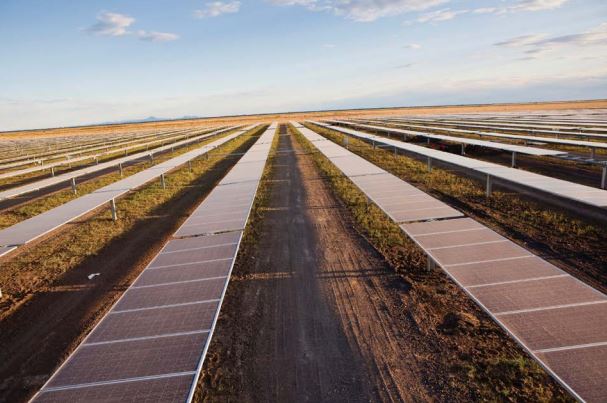Project developer UPC/AC Renewables Australia has revealed that the New South Wales Department of Planning, Industry and Environment (DPIE) has approved the development of the 400 MW Stubbo Solar Farm and 200 MW/200 MWh battery energy storage project near Dubbo, in the Australian state’s Orana region.
The solar farm will be funded by shareholders of UPC\AC Australia, a joint venture between UPC Renewables and AC Energy, which is a subsidiary of Ayala Corp. in the Philippines. It will include about 800,000 single-axis tracking solar modules and a battery energy storage system, which means the project will be able to dispatch energy when it is most needed during peak hours, while also providing important grid stability services.
Upon completion, the Stubbo Solar Farm will annually generate more than 1 million MWh of solar energy – enough to power more than 150,000 homes. Killian Wentrup, the head of solar development at UPC\AC Renewables Australia, said the project will now push ahead with its grid-connection application and the appointment of a main EPC contractor.
“We hope to begin construction by early to mid-2022, subject to finalisation of our final contracts and securing finance,” Wentrup said. “We want to thank the local community for its ongoing feedback, which helped us make changes to the project proposal and to reduce some of the potential impacts. We look forward to continuing that positive relationship over many years to come.”
The project will be developed across a 1,250-hectare site about 10 kilometers north of Gulgong, approximately 115 km east of Dubbo. It will connect to the National Electricity Market (NEM) via TransGrid’s 330 kV Wellington to Wollar TransGrid transmission line, which transects the site.
The DPIE released its final assessment decision earlier this month. It concluded that the project would support the transition of the state’s energy sector to renewable sources and provide stability for the grid.
“It would contribute 400 MW of renewable energy to the National Electricity Market, including a battery storage facility with a capacity of 200 MW/200 MWh,” the department wrote in its report. “Importantly, the battery facility would enable the project to store solar energy for dispatch to the grid outside of daylight hours and/or during periods of peak demand, which has the potential to increase grid stability and energy security.”
The site is strategically located within the New South Wales government’s Central West Renewable Zone. It expects this to help unlock 3 GW of renewable energy generation and AUD 4.4 billion ($3.3 billion) in private capital investment by the mid-2020s.
The project is one of several that the joint venture has in its Australian pipeline, including the 720 MW New England Solar Farm, the 160 MW Axedale Solar Farm in central Victoria, and the fully approved 250 MW Baroota Pumped Hydro project in South Australia.
This content is protected by copyright and may not be reused. If you want to cooperate with us and would like to reuse some of our content, please contact: editors@pv-magazine.com.




By submitting this form you agree to pv magazine using your data for the purposes of publishing your comment.
Your personal data will only be disclosed or otherwise transmitted to third parties for the purposes of spam filtering or if this is necessary for technical maintenance of the website. Any other transfer to third parties will not take place unless this is justified on the basis of applicable data protection regulations or if pv magazine is legally obliged to do so.
You may revoke this consent at any time with effect for the future, in which case your personal data will be deleted immediately. Otherwise, your data will be deleted if pv magazine has processed your request or the purpose of data storage is fulfilled.
Further information on data privacy can be found in our Data Protection Policy.